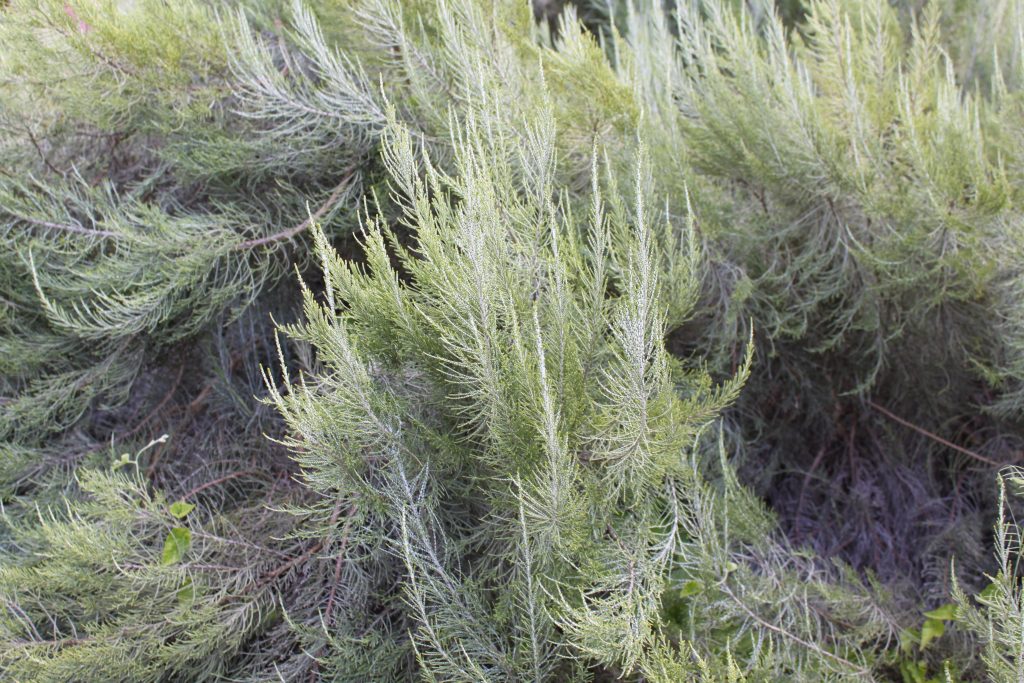
Somebody thought this shrub or small tree had a connection with the ear of a rhinocerous, or so the common name and specific epithet suggest. The specific epithet, rhinocerotis, comes from the Greek words ῥῑ́ς meaning snout, κέρας meaning horn, and οὖς meaning ear but you have to use your imagination to determine the relationship between the plant and the animal. Whatever the relationship is, however, the plant is very unusual looking and is bound to catch the eye. The stems grow up to 6.5′ tall, and carry numerous thin twigs bearing tiny, triangular leaves tightly pressed to the twig, and fine white hairs that produce a gray woolly appearance. In early winter, tiny, inconspicuous, brown flowerheads appear at the tips of the twigs and give way to seed heads with numerous seeds, each with a with feathery pappus that facilitates wind dispersal. The bush is soft and fluffy looking as the seeds are shed in late winter. The plants are valued for their medicinal and ornamental characteristics but are unpalatable to livestock and can become weedy. Endemic to South Africa, rhinocerous bush is a member of the aster family, Asteraceae, that also includes daisy, yarrow, and lettuce.
Type: Shrub or small tree
Size: 6.5′ H
Bloom Color: Brown (tiny and inconspicuous)
Bloom Time: Early winter
Light: Full sun
Soil: Clay or loam, medium moist to dry, well-drained
Hardiness: Zones 9-10
Photo Credit: Wikipedia